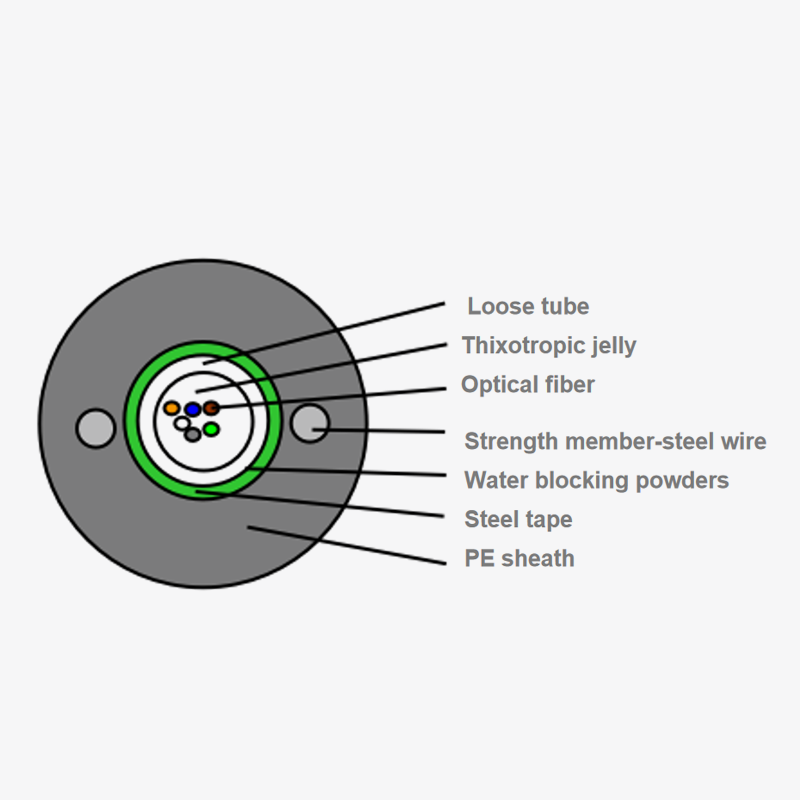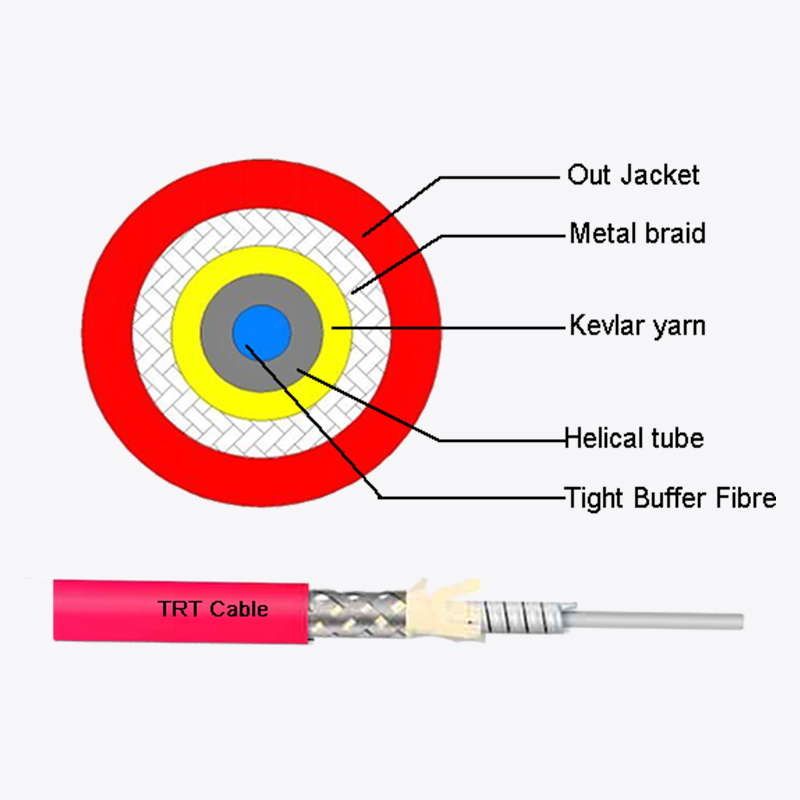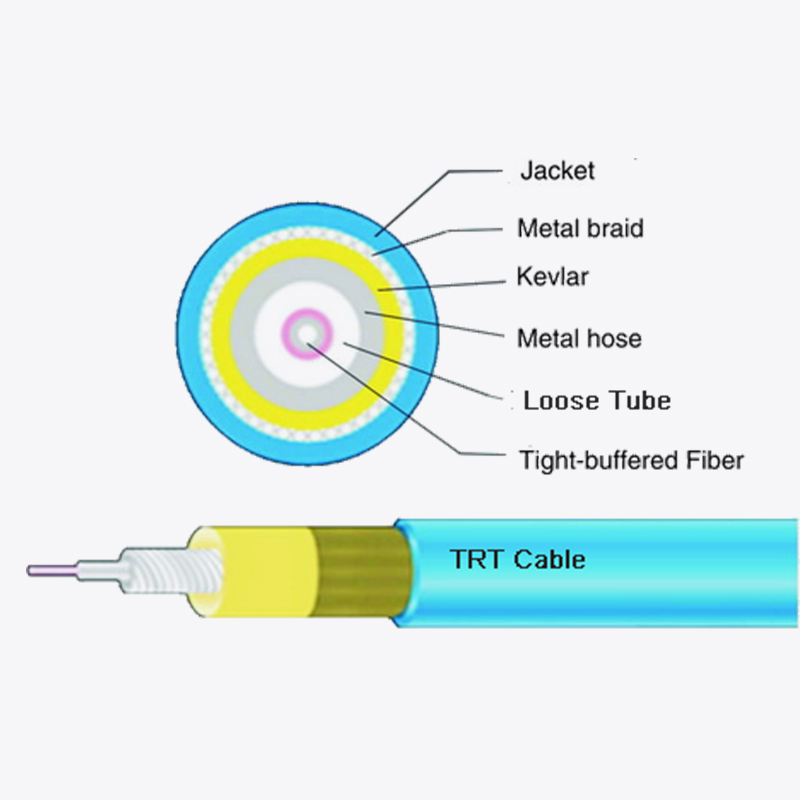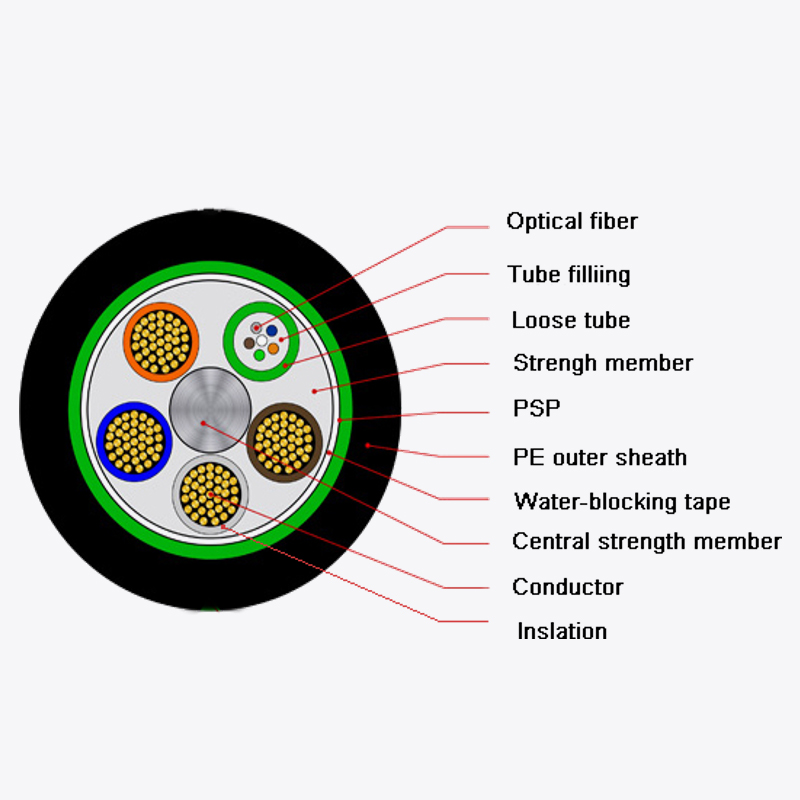Web Menu
Product Search
Exit Menu
How does the integrated light armored optical cable (GYXS/GYXTW) optimize the laying in complex environments through lightweight design?

How does the integrated light armored optical cable (GYXS/GYXTW) optimize the laying in complex environments through lightweight design?
In the optical cable laying project, the construction efficiency and deployment flexibility are often limited by the mechanical properties of the cable body. Although the traditional armored optical cable has strong pressure and impact resistance, its large weight and rigid structure make it face problems such as traction difficulties and limited bending radius in complex routing scenarios. The integrated light armored optical cable (GYXS/GYXTW) significantly reduces the weight and rigidity of the cable body while maintaining the armor protection performance through structural optimization, thus showing significant advantages in pipeline laying, complex terrain deployment and other scenarios.
Compared with the multi-layer isolation design of traditional armored optical cables, unitube light-armored cable(GYXS/GYXTW) uses steel belt longitudinal wrapping or steel wire twisted armor and sheath integrated molding, which not only reduces redundant materials, but also improves the integrity of the structure. This design allows the optical cable to have sufficient mechanical strength while having a smaller cable diameter, lighter weight, and significantly improved bending performance. Traditional armored optical cables have strong rigidity in the armor layer, so the traction force must be strictly controlled when the pipeline is turned or laid overhead to avoid damage to the optical fiber. The flexible advantage of the light armor structure enables it to adapt to a smaller bending radius, and it can flexibly travel in dense pipelines or complex building structures, reducing the difficulty of construction.
In addition, the length of a single reel of an integrated light armored optical cable can usually reach more than 1.5 times that of a traditional armored optical cable. This feature directly reduces the number of optical cable splicing points, which not only reduces the fusion loss, but also shortens the construction time. It is especially suitable for long-distance metropolitan area network transformation or rural wide coverage projects. Traditional armored optical cables are heavy and have limited single-reel length. When deployed in mountainous areas or across regions, they need to be frequently interrupted for traction and splicing, while the ductility of light armored optical cables effectively alleviates this contradiction. At the same time, due to the reduced weight, the construction party does not need to rely on heavy traction equipment, and can complete the laying with manpower or light machinery, further improving the economic efficiency of the project.
In complex terrain or environments with tight existing pipeline resources, the lightweight characteristics of GYXS/GYXTW make it a better choice. For example, in the renovation of pipelines in old urban areas, existing pipe holes may be deformed or silted due to their age. Traditional armored optical cables are relatively rigid, and forced traction can easily cause pipe wall wear or even cable jam. Light armored optical cables, with their flexibility and smaller outer diameter, can pass through narrow or curved pipelines more smoothly, reducing construction risks. Similarly, in rural overhead laying scenarios, the light armor structure avoids the weakness of non-armored optical cables that are easily damaged by external forces, and does not increase the load on the pole line due to excessive weight, thus achieving a balance between protection and deployment convenience.
It is worth noting that the advantages of light armored optical cables are not only reflected in the construction stage, but their long-term reliability is also worthy of attention. Traditional armored optical cables are heavy in structure, and are prone to stress concentration under temperature changes or external forces, which may affect the life of the optical fiber. The integrated design of GYXS/GYXTW makes the stress distribution more uniform, and the armor layer tightly protects the optical fiber unit, so that it can still maintain stable optical performance in long-term operation. This design concept of "using simplicity to control complexity" allows the light armored optical cable to reduce deployment costs without sacrificing its core reliability as a communication medium.
From the perspective of technological evolution, GYXS/GYXTW represents the transformation of optical cable design from "enhanced protection" to "precise adaptation". Early armored optical cables tended to increase the protection level by increasing the amount of materials used, while the integrated light armored structure achieved a synergistic improvement in performance and efficiency by optimizing the material distribution and mechanical transmission path. This idea is particularly in line with the current demand for rapid deployment and flexible expansion of optical network construction. Whether it is 5G fronthaul, fiber to the home, or industrial Internet of Things scenarios, light armored optical cables can become the preferred solution for critical infrastructure with their adaptability.
 Address:Zhong'an Road, Puzhuang Town, Suzhou City, Jiangsu Prov., China
Address:Zhong'an Road, Puzhuang Town, Suzhou City, Jiangsu Prov., China Phone:+86-189 1350 1815
Phone:+86-189 1350 1815 Tel:+86-512-66392923
Tel:+86-512-66392923 Fax:+86-512-66383830
Fax:+86-512-66383830 Email:[email protected]
Email:[email protected] Wechat: xiaobin18913501815
Wechat: xiaobin18913501815 whatsapp: +86 18913501815
whatsapp: +86 18913501815
 0
0

 English
English русский
русский Español
Español Português
Português عربى
عربى



